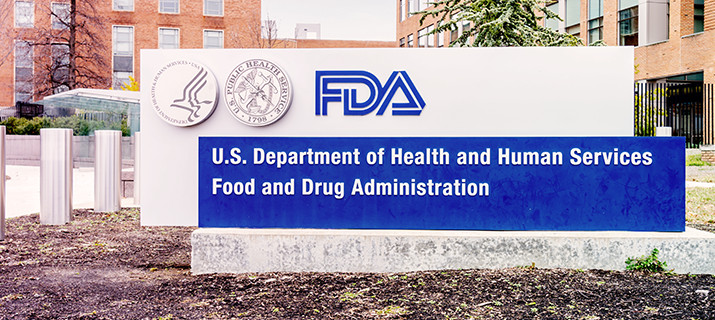
GxP Lifeline
Life Before Consumer Protection and the Food, Drug, and Cosmetic Act

The U.S. Food and Drug Administration (FDA) oversees the safety of most food products, drugs, medical devices, and cosmetics. This massive agency has grown to have a budget over $6.1 billion and regulates items accounting for 20 cents of every dollar spent by consumers. 1 It wasn’t always this way, and without good manufacturing practice regulations and other quality standards, consumers risked their health just by purchasing medication that claimed to ease their symptoms. So, how did we get here?
Start of the FDA – Concerns About Food Safety
Although it wasn’t known as the FDA until much later, its role in consumer safety can be traced back to Dr. Harvey Wiley. In 1882 the consumer safety advocate took on the role of Chief Chemist at the U.S. Department of Agriculture (USDA). 2 Wiley had deep concerns about chemical preservatives in foods – and he wasn’t alone. Over the 25 years leading up to the 1906 Federal Food and Drug Act, there were hundreds of bills written concerning food and drug regulation. Under Wiley’s leadership, the Bureau of Chemistry, which ultimately became the FDA, was given the regulatory responsibilities to prevent adulteration and misbranding of food and drugs. The main function of the act was to enforce labeling of ingredients like alcohol, cocaine, heroin, and other harmful substances. 3 However, it soon proved to not be enough.
Food, Drug, and Cosmetic Act of 1938 – Drugs, Cosmetics, and Medical Devices
Next, the Bureau shifted their focus to drug regulation, and rightly so. By the 1930s, the market was flooded with unsafe products and drugs. As just a few examples, eyelash dye blinded women, unsafe drugs given to pregnant women caused severe birth defects, and an exhaler falsely claimed to cure tuberculosis. 4 5
The worst and most public example came in 1937 when a pharmaceutical company formulated a liquid version of a well-known product, Elixir Sulfanilamide. The antibiotic was tested for flavor, appearance, and fragrance — but not safety. This untested product contained antifreeze and led to over 100 deaths, many of them young children. Even though the drug clearly was the cause of death, the FDA could only charge them for having a misbranded product.
The incident caused public uproar and eventually led to the Food, Drug, and Cosmetic Act of 1938 (FD&C). 6 This Act brought cosmetics and medical devices under the agency’s control, and also mandated premarket approval of new drugs. Later on, several more amendments passed to include stricter regulation of drug and clinical trials as well as strict regulation of the medical devices as the industry boomed. 7
Amendments to the FD&C – Food Additives and Dietary Supplements
As more and more chemicals entered the food supply throughout the 1950s, the FDA was given tighter control on what additives were put into food. At the time, many dyes were being made from coal, tar, and other harmful substances. After several children fell ill after eating orange Halloween candy, the FDA decided to start looking closer at all chemicals and preservatives. 8 This included pesticide residues, food additives, and color additives. The lack of transparency around the ingredients in everyday foods ultimately led to the Nutrition Labeling and Education Act of 1990, which completely changed how food products are required to label their nutritional information. The act gave us the food labels we're familiar with today that help us to understand exactly what we're eating.
Conclusion
The FDA continues to adapt their regulations to meet market demands while ensuring public safety. Meeting these requirements can be cumbersome for manufacturers in the life sciences, but we can see how these rules are necessary to protect us as consumers. It’s not exaggerating to say that before 1938, every time you bought a product you took your life into your hands. Now consumers know the products, drugs, and food items they purchase everyday have been tested for safety and efficacy because of laws like the FD&C Act.
Regulations and ways to meet them continue to evolve. Developing technology and the use of digital tools allows for cost-effective innovation and speed to market. As an example, companies like Pfizer and Moderna were able to develop and get approval of the COVID-19 vaccine in record time. These companies wouldn't have been able to move their vaccine to market at this speed using paper systems, while prioritizing patient safety, and complying with the FDA regulations. With advances in technology, particularly cloud computing and advanced analytics available with a digital quality management system, companies have the flexibility to develop their products quickly while ensuring compliance.
Sources:
- “Fact Sheet: FDA at a Glance,” U.S. Food and Drug Administration, November 2021
- “Harvey Washington Wiley,” U.S. Food and Drug Administration,
- “Part I: The 1906 Food and Drugs Act and Its Enforcement,” U.S. Food and Drug Administration, April 2019
- “A Brief History of the FDA,” Stephen Daily, CRS Today, October 2011
- “The Story of Thalidomide in the U.S., Told Through Documents,” Katie Thomas, The New York Times, March 2020
- “Sulfanilamide Disaster,” Carol Ballentine, FDA Consumer magazine, June 1981 Issue
- Supra note 4
- “Color Additives History,” U.S. Food and Drug Administration, November 2017

